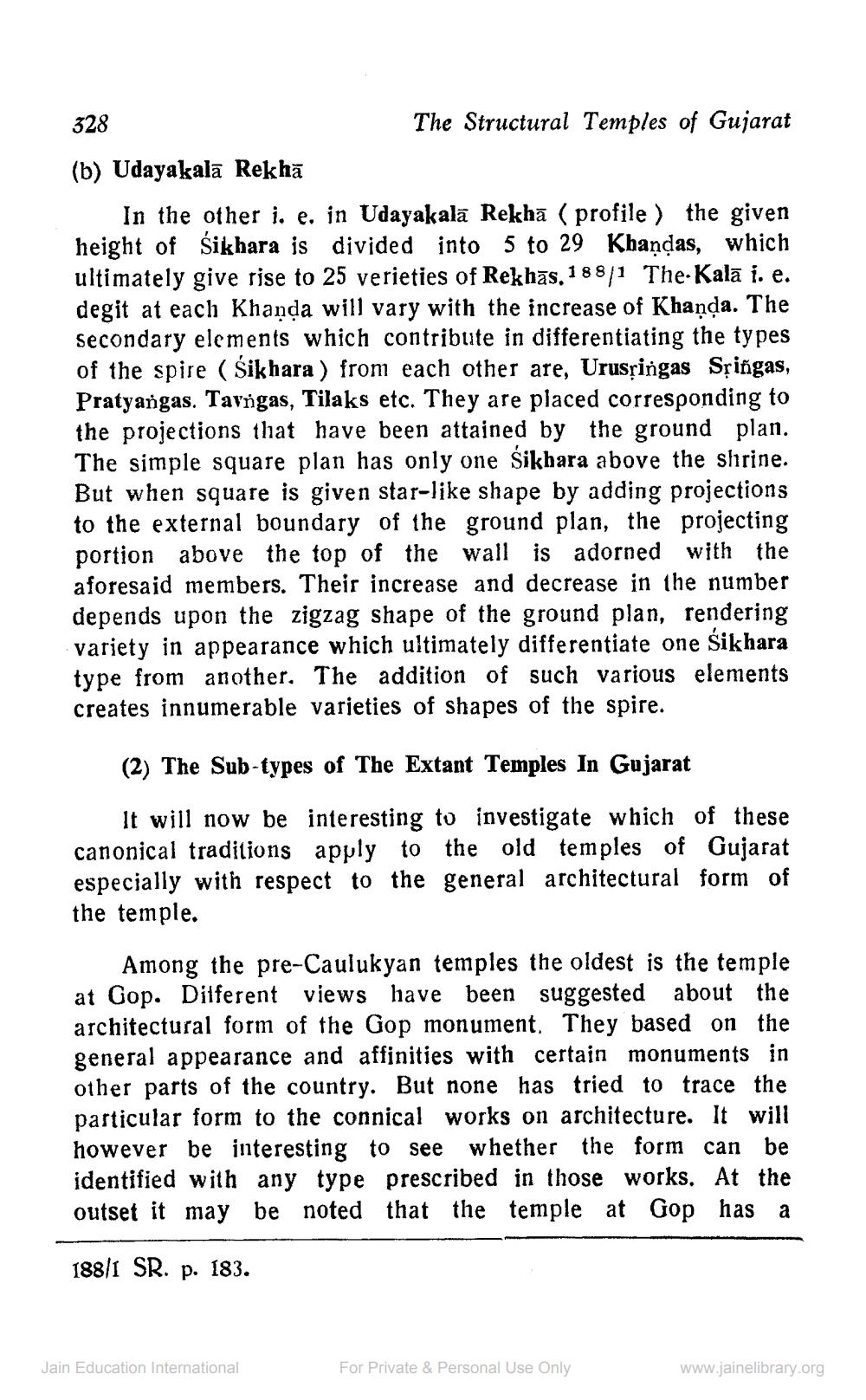________________
328
The Structural Temples of Gujarat (b) Udayakalā Rekhā
In the other i. e. in Udayakalā Rekhā ( profile ) the given height of śikhara is divided into 5 to 29 Khaņdas, which ultimately give rise to 25 verieties of Rekhās. 1881 The Kalā j. e. degit at each Khanda will vary with the increase of Khaņda. The secondary elements which contribute in differentiating the types of the spire ( śikhara ) from each other are, Urusțingas Sțingas, Pratyangas. Tavngas, Tilaks etc. They are placed corresponding to the projections that have been attained by the ground plan. The simple square plan has only one śikhara above the shrine. But when square is given star-like shape by adding projections to the external boundary of the ground plan, the projecting portion above the top of the wall is adorned with the aforesaid members. Their increase and decrease in the number depends upon the zigzag shape of the ground plan, rendering variety in appearance which ultimately differentiate one Sikhara type from another. The addition of such various elements creates innumerable varieties of shapes of the spire.
(2) The Sub-types of The Extant Temples In Gujarat
It will now be interesting to investigate which of these canonical traditions apply to the old temples of Gujarat especially with respect to the general architectural form of the temple.
Among the pre-Caulukyan temples the oldest is the temple at Gop. Different views have been suggested about the architectural form of the Gop monument. They based on the general appearance and affinities with certain monuments in other parts of the country. But none has tried to trace the particular form to the connical works on architecture. It will however be interesting to see whether the form can be identified with any type prescribed in those works. At the outset it may be noted that the temple at Gop has a
188/1 SR. p. 183.
Jain Education International
For Private & Personal Use Only
www.jainelibrary.org




